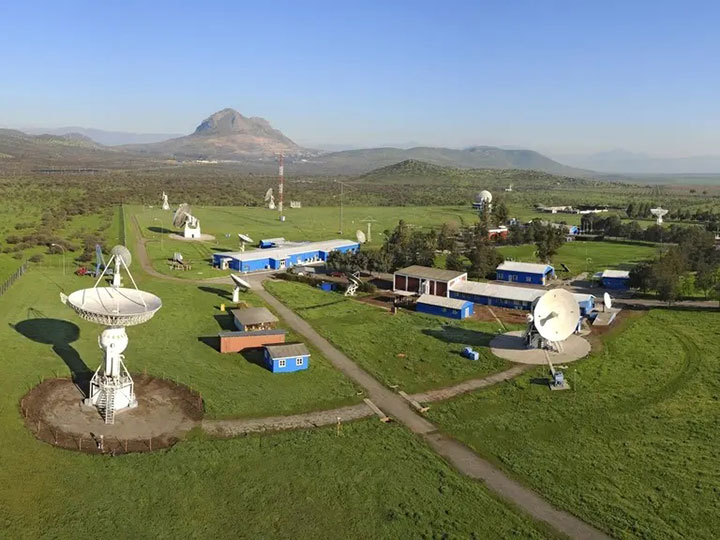 An image of Swedish Space Corporation’s Santiago Satellite Station with three TT&C antennas operating in S-Band up and downlink. (Source: SSC/sscspace.com)
An image of Swedish Space Corporation’s Santiago Satellite Station with three TT&C antennas operating in S-Band up and downlink. (Source: SSC/sscspace.com)
Constellations spoke with John Taylor, Chief Engineer at Swedish Space Corporation, about the evolving role of the ground segment. The discussion covered the emergence of ground segment-as-a-service (GSaaS), technical innovations, like software-based modems, and what the sector will look like going forward.
Traditional Ground vs. GSaaS
“There was a time when a traditional ground station was very fixed hardware and software. It was very fixed configurations and solutions permissions,” Taylor says. But the modern ground system looks different. “You can basically handle it anywhere,” Taylor says. “You can demodulate it anywhere in a cloud on the station, and it allows a lot of flexibility in terms of how you build an architecture for ground stations, because it doesn’t limit you to a physical piece of hardware.”
Evolution in the design of ground systems is driven by the changing needs of a new generation of satellite operators. These companies don’t want to be responsible for designing and maintaining ground system architecture, he says, “[They] just want access to space, they want access to their assets and to get their data.”
Previously, a company might be vested in the exact model of hardware and software used within ground support architecture, but that’s changing. “I look at it like a cell phone,” Taylor says, describing the new relationship between ground support architecture and companies interested in space and satellite missions. “You go in, you get your phone, it’s on the system. You don’t care what brand of antenna they’re using at the cell towers or anything like that, as long as it works and there’s one around you.”
Technical Innovation Leads the Way
With this change in architecture, SSC is also driving significant technical innovation in how ground support is managed. For example, digitization of ground technology, most notably software-based modems, allows operators to use new and multiple waveforms for satellite missions.
“The modems that are software-firmware-based are very upgradeable,” Taylor says. That’s a significant advantage that makes adding capabilities, like forward error correction or a modulation scheme, easier to do. In the past, modems were hardened (or fixed), which quickly leads to obsolescence. With this new technology, however, “We’re allowed to basically keep up with technology as it evolves.”
New ground support systems are also capable of moving massive amounts of data, Taylor says. “Twenty years ago, 80-150 megabits per second was a very high data rate.” But now, he says, “We’re supporting missions that are over a gigabit a second.” Successfully handling the increasingly large data demand is also a result of software innovations; tools like file accelerations move data more quickly than was previously possible.
The Future of Ground Support
Going forward, automation within the ground segment will allow ground networks to onboard more users and enable more efficient satellite management. “Higher automation, scheduling, reporting, all those things will be done more in software,” says Taylor. “We’re definitely in a transformational period. It feels like we’re trying to fly the plane and rebuild the engine.”
Above all, standardization across ground system networks will be paramount in the age of ground segment-as-a-service. “I think standardization will continue to be a big part of [the ground segment] so that everybody can play together,” Taylor says. Standardized architecture and processes will allow companies to be onboarded into new ground systems quickly and efficiently.
For more on GSaaS, virtual operation centers and multi-orbit capabilities, listen to the full episode here.
